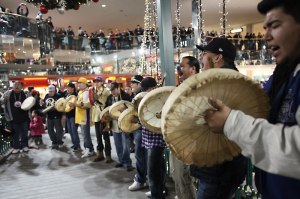Oct 28
20131
350.org / 1Sky, Foundations, Greenpeace, Non-Profit Industrial Complex
350.org Assembly of First Nations Canadian Boreal Forest Agreement (CBFA) Capitalism Forestry Products Association of Canada North American Tar Sands Coalition Pew Charitable Trusts PowerUp Tar Sands Solutions Network
What We Talk About When We Talk About Foundation Funding
Inside the Big Green Machine
Weekend Edition, October 25 to 27, 2013
by Macdonald Stainsby
When discussions begin among environmentally concerned people about foundation funding and how it offsets resistance, a common complaint is that such a discussion is unnecessarily negative. With all of the world at stake, so goes the argument, we need to involve as many “diverse” views and strategies to stop climate chaos as possible. Rather than “being divisive,” we need positive thinking.While Big Capital and Big Green are trying to propose they are building a bridge to a better, healthy planet– whatever you do, don’t look down. The bridge is faulty, and you’re already half way over the chasm. Just trust the bridge– and keep walking.
A politics based, more or less, on the Beatles maxim “All you need is Love” is demanded. Then, many questions– both real and imagined– to a critique of the fundamentally authoritarian Big Green movement will often come most derisively from those who one would believe have the most in common with the democratic values desperately needed inside Big Green. →
